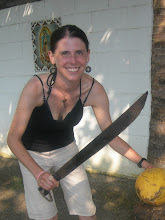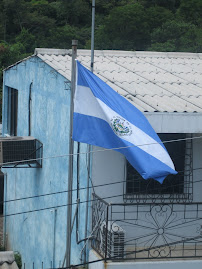
Last Wednesday, I went on a long journey with 6 other people from Pastoral Social to visit an economically poor family with a little girl who is immobile and cannot talk. We wanted to reach out to them and share in God's love. So, we each bought some basic food or other essential item, such as beans, rice, sugar, soap, and corn. We hauled these items on our backs, along with $15 raised through a second collection at church. This family lives 2 hours away by foot from the town of Santo Domingo, so they actually pertain to another municipality. While they do not technically belong to our parish community, we know that God's kingdom does not have borders. We all pertain to the same family and so out of this solidarity we set out on foot.
When we arrived, Sandra, the mom let us into her home. We began with a prayer and a reading from the Scriptures because we are all in need of spiritual nourishment. Then we just sat for a while to chat with her and get to know her daughter, Jenifer Patricia. They live in a small, mud home far away from the heart of their municipality and therefore far from any form of governmental aid. Both of Sandra's parents have died and her sisters live in Guatemala. So, she has no family close by to help her out, and her husband works all day. Essentially, she is trapped because she cannot carry her daughter on a long walk and cannot abandon her in the house.
My heart broke open listening to her story, but I think what touched me most was when one of the members of Pastoral Social, Elma, took Jenifer in her arms and said that we were her new friends. She provided such a loving touch to a beautiful child who we could easily view as a mere burden to her mom. This is what Pastoral Social is about, recognizing the dignity within each one of us and being a loving presence that is transformative. Needless to say, the walk back didn't seem as long.





















